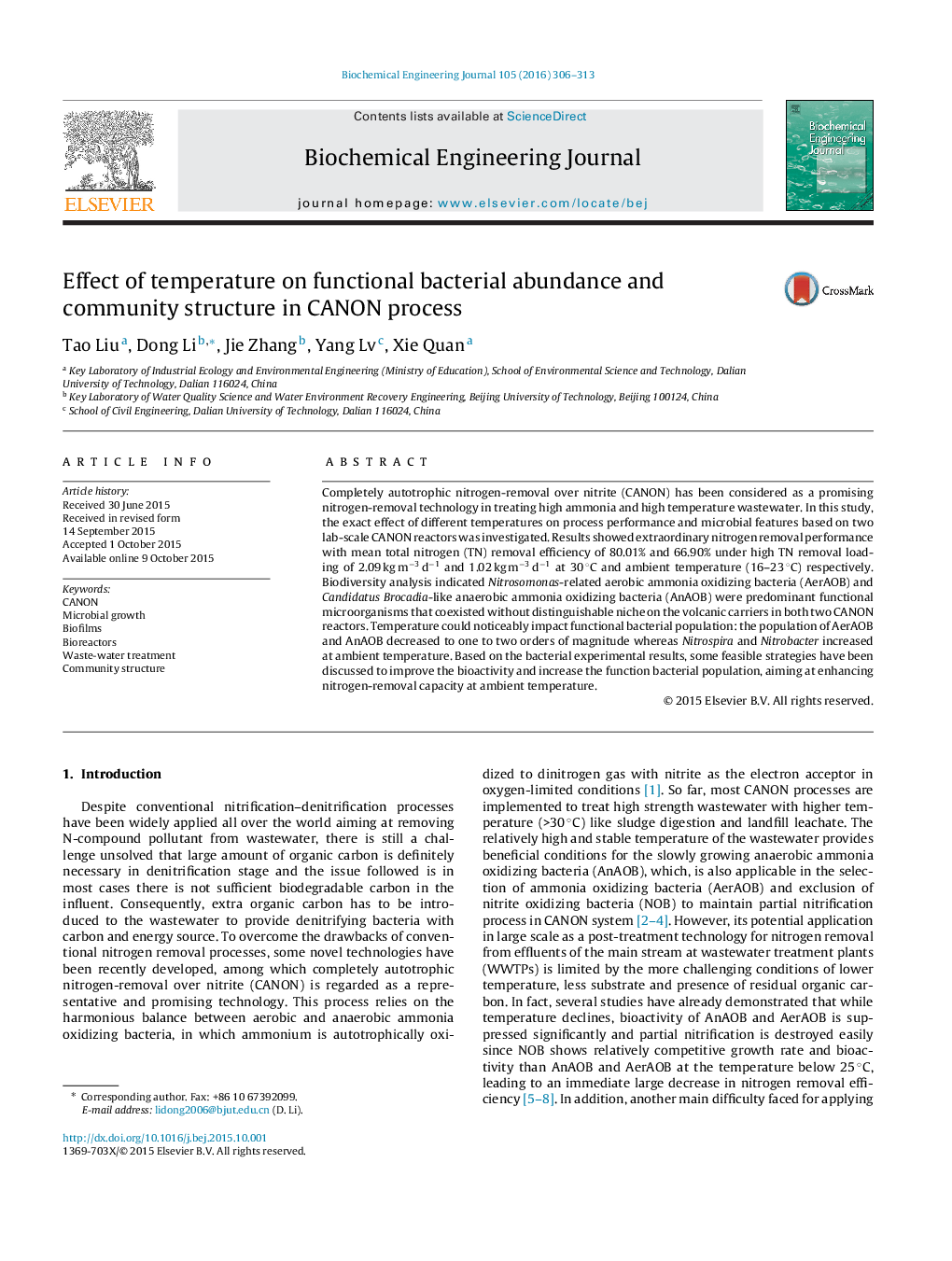| Article ID | Journal | Published Year | Pages | File Type |
|---|---|---|---|---|
| 2832 | Biochemical Engineering Journal | 2016 | 8 Pages |
•Extraordinary nitrogen removal performance was achieved at different temperatures.•AerAOB and AnAOB coexisted without distinguishable niche on the volcanic carriers.•Population of denitrify-related bacteria changed obviously at different temperatures.•Intermittent aeration were expected to improve N removal at ambient temperature.
Completely autotrophic nitrogen-removal over nitrite (CANON) has been considered as a promising nitrogen-removal technology in treating high ammonia and high temperature wastewater. In this study, the exact effect of different temperatures on process performance and microbial features based on two lab-scale CANON reactors was investigated. Results showed extraordinary nitrogen removal performance with mean total nitrogen (TN) removal efficiency of 80.01% and 66.90% under high TN removal loading of 2.09 kg m−3 d−1 and 1.02 kg m−3 d−1 at 30 °C and ambient temperature (16–23 °C) respectively. Biodiversity analysis indicated Nitrosomonas-related aerobic ammonia oxidizing bacteria (AerAOB) and Candidatus Brocadia-like anaerobic ammonia oxidizing bacteria (AnAOB) were predominant functional microorganisms that coexisted without distinguishable niche on the volcanic carriers in both two CANON reactors. Temperature could noticeably impact functional bacterial population: the population of AerAOB and AnAOB decreased to one to two orders of magnitude whereas Nitrospira and Nitrobacter increased at ambient temperature. Based on the bacterial experimental results, some feasible strategies have been discussed to improve the bioactivity and increase the function bacterial population, aiming at enhancing nitrogen-removal capacity at ambient temperature.
